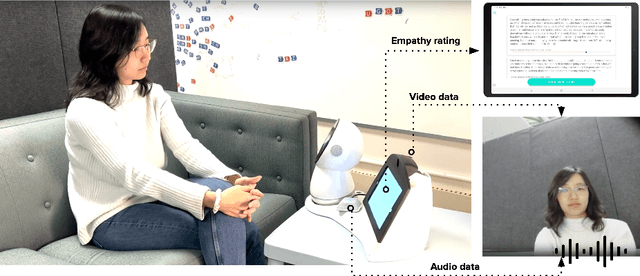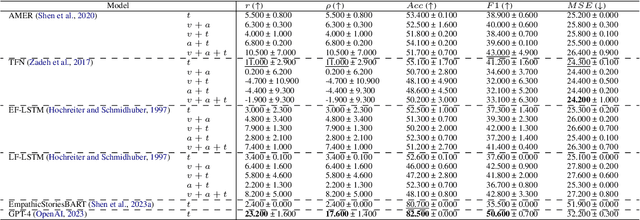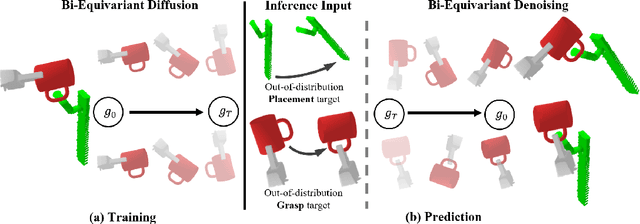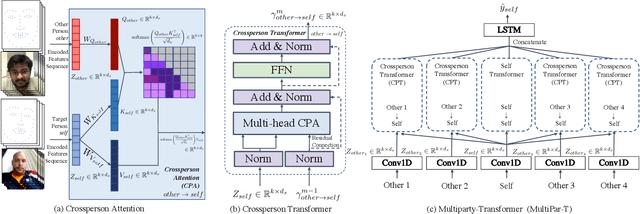Yubin Kim
A Demonstration of Adaptive Collaboration of Large Language Models for Medical Decision-Making
Oct 31, 2024



Abstract:Medical Decision-Making (MDM) is a multi-faceted process that requires clinicians to assess complex multi-modal patient data patient, often collaboratively. Large Language Models (LLMs) promise to streamline this process by synthesizing vast medical knowledge and multi-modal health data. However, single-agent are often ill-suited for nuanced medical contexts requiring adaptable, collaborative problem-solving. Our MDAgents addresses this need by dynamically assigning collaboration structures to LLMs based on task complexity, mimicking real-world clinical collaboration and decision-making. This framework improves diagnostic accuracy and supports adaptive responses in complex, real-world medical scenarios, making it a valuable tool for clinicians in various healthcare settings, and at the same time, being more efficient in terms of computing cost than static multi-agent decision making methods.
EmpathicStories++: A Multimodal Dataset for Empathy towards Personal Experiences
May 24, 2024



Abstract:Modeling empathy is a complex endeavor that is rooted in interpersonal and experiential dimensions of human interaction, and remains an open problem within AI. Existing empathy datasets fall short in capturing the richness of empathy responses, often being confined to in-lab or acted scenarios, lacking longitudinal data, and missing self-reported labels. We introduce a new multimodal dataset for empathy during personal experience sharing: the EmpathicStories++ dataset (https://mitmedialab.github.io/empathic-stories-multimodal/) containing 53 hours of video, audio, and text data of 41 participants sharing vulnerable experiences and reading empathically resonant stories with an AI agent. EmpathicStories++ is the first longitudinal dataset on empathy, collected over a month-long deployment of social robots in participants' homes, as participants engage in natural, empathic storytelling interactions with AI agents. We then introduce a novel task of predicting individuals' empathy toward others' stories based on their personal experiences, evaluated in two contexts: participants' own personal shared story context and their reflections on stories they read. We benchmark this task using state-of-the-art models to pave the way for future improvements in contextualized and longitudinal empathy modeling. Our work provides a valuable resource for further research in developing empathetic AI systems and understanding the intricacies of human empathy within genuine, real-world settings.
Adaptive Collaboration Strategy for LLMs in Medical Decision Making
Apr 22, 2024Abstract:Foundation models have become invaluable in advancing the medical field. Despite their promise, the strategic deployment of LLMs for effective utility in complex medical tasks remains an open question. Our novel framework, Medical Decision-making Agents (MDAgents) aims to address this gap by automatically assigning the effective collaboration structure for LLMs. Assigned solo or group collaboration structure is tailored to the complexity of the medical task at hand, emulating real-world medical decision making processes. We evaluate our framework and baseline methods with state-of-the-art LLMs across a suite of challenging medical benchmarks: MedQA, MedMCQA, PubMedQA, DDXPlus, PMC-VQA, Path-VQA, and MedVidQA, achieving the best performance in 5 out of 7 benchmarks that require an understanding of multi-modal medical reasoning. Ablation studies reveal that MDAgents excels in adapting the number of collaborating agents to optimize efficiency and accuracy, showcasing its robustness in diverse scenarios. We also explore the dynamics of group consensus, offering insights into how collaborative agents could behave in complex clinical team dynamics. Our code can be found at https://github.com/mitmedialab/MDAgents.
Health-LLM: Large Language Models for Health Prediction via Wearable Sensor Data
Jan 12, 2024



Abstract:Large language models (LLMs) are capable of many natural language tasks, yet they are far from perfect. In health applications, grounding and interpreting domain-specific and non-linguistic data is important. This paper investigates the capacity of LLMs to deliver multi-modal health predictions based on contextual information (e.g. user demographics, health knowledge) and physiological data (e.g. resting heart rate, sleep minutes). We present a comprehensive evaluation of eight state-of-the-art LLMs with diverse prompting and fine-tuning techniques on six public health datasets (PM-Data, LifeSnaps, GLOBEM, AW_FB, MIT-BIH & MIMIC-III). Our experiments cover thirteen consumer health prediction tasks in mental health, activity, metabolic, sleep, and cardiac assessment. Our fine-tuned model, Health-Alpaca exhibits comparable performance to larger models (GPT-3.5 and GPT-4), achieving the best performance in 5 out of 13 tasks. Ablation studies highlight the effectiveness of context enhancement strategies, and generalization capability of the fine-tuned models across training datasets and the size of training samples. Notably, we observe that our context enhancement can yield up to 23.8% improvement in performance. While constructing contextually rich prompts (combining user context, health knowledge and temporal information) exhibits synergistic improvement, the inclusion of health knowledge context in prompts significantly enhances overall performance.
Diffusion-EDFs: Bi-equivariant Denoising Generative Modeling on SE(3) for Visual Robotic Manipulation
Sep 07, 2023



Abstract:Recent studies have verified that equivariant methods can significantly improve the data efficiency, generalizability, and robustness in robot learning. Meanwhile, denoising diffusion-based generative modeling has recently gained significant attention as a promising approach for robotic manipulation learning from demonstrations with stochastic behaviors. In this paper, we present Diffusion-EDFs, a novel approach that incorporates spatial roto-translation equivariance, i.e., SE(3)-equivariance to diffusion generative modeling. By integrating SE(3)-equivariance into our model architectures, we demonstrate that our proposed method exhibits remarkable data efficiency, requiring only 5 to 10 task demonstrations for effective end-to-end training. Furthermore, our approach showcases superior generalizability compared to previous diffusion-based manipulation methods.
XWalk: Random Walk Based Candidate Retrieval for Product Search
Jul 22, 2023Abstract:In e-commerce, head queries account for the vast majority of gross merchandise sales and improvements to head queries are highly impactful to the business. While most supervised approaches to search perform better in head queries vs. tail queries, we propose a method that further improves head query performance dramatically. We propose XWalk, a random-walk based graph approach to candidate retrieval for product search that borrows from recommendation system techniques. XWalk is highly efficient to train and inference in a large-scale high traffic e-commerce setting, and shows substantial improvements in head query performance over state-of-the-art neural retreivers. Ensembling XWalk with a neural and/or lexical retriever combines the best of both worlds and the resulting retrieval system outperforms all other methods in both offline relevance-based evaluation and in online A/B tests.
HIINT: Historical, Intra- and Inter- personal Dynamics Modeling with Cross-person Memory Transformer
May 21, 2023Abstract:Accurately modeling affect dynamics, which refers to the changes and fluctuations in emotions and affective displays during human conversations, is crucial for understanding human interactions. By analyzing affect dynamics, we can gain insights into how people communicate, respond to different situations, and form relationships. However, modeling affect dynamics is challenging due to contextual factors, such as the complex and nuanced nature of interpersonal relationships, the situation, and other factors that influence affective displays. To address this challenge, we propose a Cross-person Memory Transformer (CPM-T) framework which is able to explicitly model affective dynamics (intrapersonal and interpersonal influences) by identifying verbal and non-verbal cues, and with a large language model to utilize the pre-trained knowledge and perform verbal reasoning. The CPM-T framework maintains memory modules to store and update the contexts within the conversation window, enabling the model to capture dependencies between earlier and later parts of a conversation. Additionally, our framework employs cross-modal attention to effectively align information from multi-modalities and leverage cross-person attention to align behaviors in multi-party interactions. We evaluate the effectiveness and generalizability of our approach on three publicly available datasets for joint engagement, rapport, and human beliefs prediction tasks. Remarkably, the CPM-T framework outperforms baseline models in average F1-scores by up to 7.3%, 9.3%, and 2.0% respectively. Finally, we demonstrate the importance of each component in the framework via ablation studies with respect to multimodal temporal behavior.
Multipar-T: Multiparty-Transformer for Capturing Contingent Behaviors in Group Conversations
Apr 19, 2023



Abstract:As we move closer to real-world AI systems, AI agents must be able to deal with multiparty (group) conversations. Recognizing and interpreting multiparty behaviors is challenging, as the system must recognize individual behavioral cues, deal with the complexity of multiple streams of data from multiple people, and recognize the subtle contingent social exchanges that take place amongst group members. To tackle this challenge, we propose the Multiparty-Transformer (Multipar-T), a transformer model for multiparty behavior modeling. The core component of our proposed approach is the Crossperson Attention, which is specifically designed to detect contingent behavior between pairs of people. We verify the effectiveness of Multipar-T on a publicly available video-based group engagement detection benchmark, where it outperforms state-of-the-art approaches in average F-1 scores by 5.2% and individual class F-1 scores by up to 10.0%. Through qualitative analysis, we show that our Crossperson Attention module is able to discover contingent behavior.
Joint Engagement Classification using Video Augmentation Techniques for Multi-person Human-robot Interaction
Dec 28, 2022



Abstract:Affect understanding capability is essential for social robots to autonomously interact with a group of users in an intuitive and reciprocal way. However, the challenge of multi-person affect understanding comes from not only the accurate perception of each user's affective state (e.g., engagement) but also the recognition of the affect interplay between the members (e.g., joint engagement) that presents as complex, but subtle, nonverbal exchanges between them. Here we present a novel hybrid framework for identifying a parent-child dyad's joint engagement by combining a deep learning framework with various video augmentation techniques. Using a dataset of parent-child dyads reading storybooks together with a social robot at home, we first train RGB frame- and skeleton-based joint engagement recognition models with four video augmentation techniques (General Aug, DeepFake, CutOut, and Mixed) applied datasets to improve joint engagement classification performance. Second, we demonstrate experimental results on the use of trained models in the robot-parent-child interaction context. Third, we introduce a behavior-based metric for evaluating the learned representation of the models to investigate the model interpretability when recognizing joint engagement. This work serves as the first step toward fully unlocking the potential of end-to-end video understanding models pre-trained on large public datasets and augmented with data augmentation and visualization techniques for affect recognition in the multi-person human-robot interaction in the wild.
 Add to Chrome
Add to Chrome Add to Firefox
Add to Firefox Add to Edge
Add to Edge